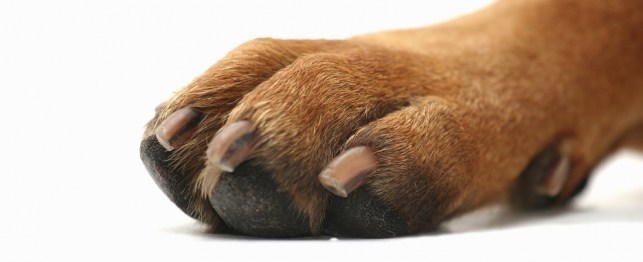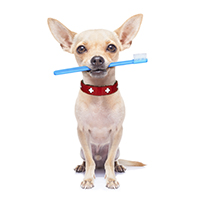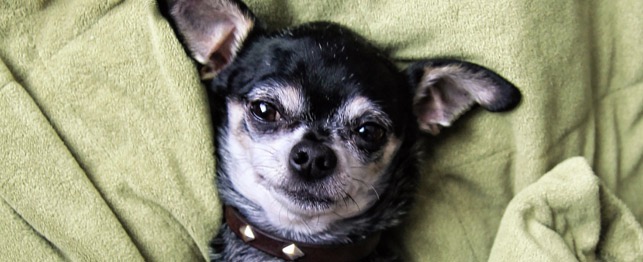Summer Paw Pad Injuries & Paw Pad Care for Dogs

Dogs
The summer can be very hard on dogs paw pads and there are things you can do to protect them.
You've likely heard that winter can be brutal on your dog's paws. Bitter cold, rock salt, and chemicals to melt ice can cause chapping, cracking, sores, infection, and blistering.
But did you know that summertime presents its own unique set of dangers to your pup's paw pads?
Common Causes of Summer Paw Pad Injuries in Dogs
- Hot Surfaces - Outdoor surfaces can reach blazing temperatures quickly under the summer sun. Your dog's paws feel heat extremes too. Tar-coated asphalt, concrete, paving stones, and sand can all become hot enough to burn your dog's feet very quickly. Less obvious hot surfaces are metal grates, manhole covers, boat docks, and car or truck surfaces.
To prevent burns and blisters, avoid walking your dog on hot surfaces. Morning walks before the sidewalk is sizzling are a safe practice. Walk your dog on the cool side of the street or in the grass. Remember, if you wouldn't want to walk on it barefoot, neither does Fido. - The Danger of Softened Paws - There's a bit more to keeping your pup's paw pads safe this summer than just avoiding hot surfaces. Fun time in the pool or lake will soften your dog's pads up, making them more susceptible to burns and injuries. Moisturizers, such as lotions not intended for paw pads, can have the same effect, so make sure you choose paw pad products carefully.
- Foxtails - Foxtails are another danger that peaks during the summer months. These are grasses with razor-sharp needles that can burrow into a dog's skin, migrate through soft tissue, and cause serious injury, infection, or even death. Paw fur picks up debris easily, making paw inspections after hikes through dense grass especially important. Special care must be taken with long-haired dogs who can more easily hide skin issues.
Signs of Dog Paw Pad Problems
Many owners don't notice burned or injured paw pads until the dog shows signs of injury. Signs include:
-
Atypical pulling on leash to run in the direction of darker sections of road surfaces instead of politely walking on leash
-
Limping, refusal to stand, or walk
-
Paw pads that have changed in color and become darker
-
Inflamed, raw, or blistered pads
-
Bleeding feet or loose flaps of paw pads
-
Licking or chewing at injured feet obsessively and with an acute onset
Treatment of Paw Pad Problems in Dogs
When you first notice the problem, get your dog to a grassy or shaded area, carrying him if possible. Flush the paw pads with cool water or a cool compress if available.
As soon as possible, your vet should examine your dog for signs of deeper burns, blisters, and possibility of infection.
Your vet will determine if medications are needed and demonstrate how to clean and bandage the paws as needed. Bandaging can pose a challenge, as most dogs will attempt to chew the bandage off (a risk for eating the bandage and developing a GI blockage), but licking must be avoided. An e-collar or cone collar is typically advised for a risk-free solution.
General Paw Pad Care for Dogs
Regardless of the season, paw pads need year-round protection and TLC. Here are some simple tips to keep paws healthy.
-
Make routine nail trims a habit. If the nails aren't kept trimmed, the continuously growing nail can be damaged and split. Sometimes, the nail will grow so long that it curls back around and grows into the flesh, creating a terribly painful infection. Ingrown nails are a problem more commonly found in toy breed dogs such as Chihuahuas because their toenails tend to thicken and grow faster. Toy breeds may also spend more time being carried and less time outdoors naturally wearing down their nails. Ask your veterinarian or a groomer for advice about what types of nail trimmers are best for your dog and how to use them properly.
-
Trim paw hair regularly to avoid painful matting and subsequent skin infections. When the heat and humidity are high, dogs are more likely to get these hot spots. To prevent this issue, comb hair out, especially from between the toes, and trim even with the pads.
-
Foreign objects can become lodged in your dog's pads. Check regularly between toes for pebbles, small bits of broken glass, and other debris.
I hope this information helps you keep your dog's paw pads safe and healthy.


 Tips for Finding Your Missing Dog
Tips for Finding Your Missing Dog
Tips for Finding Your Missing Dog
Tips for Finding Your Missing Dog
 Lyme Disease in Dogs Symptoms To Watch Out For
Early
Lyme Disease in Dogs Symptoms To Watch Out For
Early
 Ear Infections in Dogs: Causes, Diagnosis, Treatment, & Prevention
If your dog suddenly starts whining
Ear Infections in Dogs: Causes, Diagnosis, Treatment, & Prevention
If your dog suddenly starts whining
 Causes of Mammary Enlargement in Dogs
When a bitch goes through a false p
Causes of Mammary Enlargement in Dogs
When a bitch goes through a false p
 Dogs and Mental Health - What You Need to Know
Dogs and Mental Health - What You Need to Kno
Dogs and Mental Health - What You Need to Know
Dogs and Mental Health - What You Need to Kno